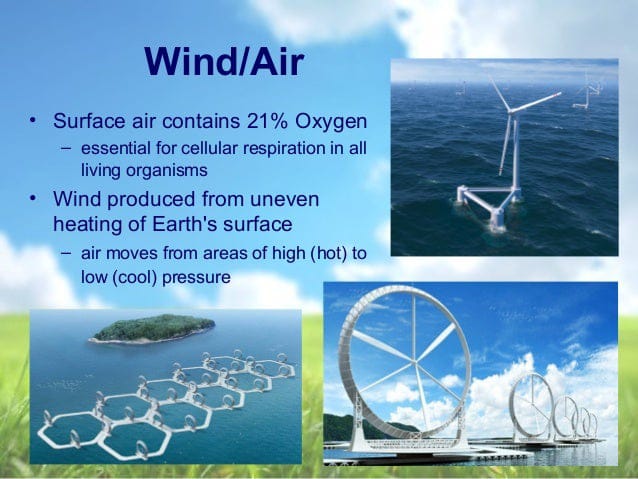Natural Air Resources
Natural Air Resources: Their Significance and Challenges
What are Natural Air Resources:
Natural air resources refer to the various components and qualities of Earth’s atmosphere that are essential for supporting life, regulating climate, and serving as resources for various human activities.

Resources
Natural air resources include gases, particles, and other elements present in the atmosphere that play critical roles in maintaining ecological balance and sustaining human life. Thus, in this essay, we will explore the key natural air resources, their significance, and the challenges associated with their management and conservation.
• Oxygen (O2) Natural Air Resources:
Oxygen is one of the most vital natural air resources. Oxygen is used in cellular respiration, a process that releases energy from food, enabling the sustenance of life. Additionally, it plays a crucial role in combustion processes and various industrial applications.
• Carbon Dioxide (CO2) Natural Air Resources:
Carbon dioxide is another important component of the atmosphere ( Natural Air Resources ), making up about 0.04% of it. Consequently, carbon dioxide is essential for plant growth and is a greenhouse gas that contributes to the Earth’s natural greenhouse effect, helping to regulate the planet’s temperature.
• Nitrogen (N2) Natural Air Resources:
Nitrogen is the most abundant gas in the atmosphere, constituting approximately 78% of it. While it is not directly used by most organisms. Nitrogen is also involved in the nitrogen cycle, where it is converted into various forms that can be used by plants and animals.
• Water Vapor (H2O) Natural Air Resources:
It plays a significant role in the Earth’s weather and climate systems. Therefore, water vapor is responsible for the formation of clouds, precipitation, and the regulation of temperature through the greenhouse effect. It is also essential for the water cycle, which ensures the availability of freshwater for ecosystems and human use.
• Trace Gases (Natural Air Resources):
Apart from the major components mentioned above, the atmosphere contains several trace gases ( Natural Air Resources ) in smaller quantities. Some of these gases, such as methane (CH4), ozone (O3), and sulfur dioxide (SO2), have significant ecological and environmental impacts. For instance, methane is a potent greenhouse gas, while ozone in the stratosphere forms the ozone layer, which protects life on Earth from harmful ultraviolet (UV) radiation.

Particulate Matter:
Particulate matter alludes to small strong or fluid particles suspended in the air. These particles can vary in size and composition and can have both natural and human-made sources. Natural sources include dust, pollen, and volcanic ash, while human-made sources include emissions from combustion processes and industrial activities. Particulate matter can affect air quality, human health, and climate by scattering or absorbing sunlight and serving as cloud condensation nuclei.
• Air Quality:
Air quality is a crucial aspect of natural air resources. Consequently, clean air free from excessive levels of pollutants, is essential for human health and the health of ecosystems. Common air pollutants include particulate matter, ground-level ozone, sulfur dioxide, nitrogen oxides, carbon monoxide, and volatile organic compounds. Thus, monitoring and improving air quality are essential for mitigating the adverse effects of air pollution on human health and the environment.
• Wind Energy:
Thus, this energy is a renewable energy source generated by the movement of air masses due to temperature differences and atmospheric pressure gradients. Wind turbines convert the kinetic energy of the wind into electricity, providing a clean and sustainable energy source for power generation.
• Atmospheric Pressure:
Atmospheric pressure is the force exerted by the weight of the atmosphere on the Earth’s surface. Thus, it varies with altitude and weather conditions. So, atmospheric pressure is crucial for maintaining stable and habitable conditions on Earth. Therefore, it affects weather patterns, ocean circulation, and the functioning of respiratory systems in living organisms.
• Air as a Transport Medium:
Air is an essential medium for the transport of heat, moisture, and weather systems across the planet. Thus, it is responsible for the distribution of temperature and plays a crucial role in climate patterns. Air travel, facilitated by airplanes, relies on the natural properties of the atmosphere for propulsion and lift.
• Natural Cooling and Ventilation:
Natural air resources provide cooling and ventilation for buildings and homes. Wind and air pressure differences can be harnessed for natural ventilation, reducing the need for energy-intensive air conditioning systems. This not only conserves energy but also promotes indoor air quality.

Biological Processes:
Plants, through photosynthesis, release oxygen into the atmosphere, which is essential for animal respiration. In return, animals exhale carbon dioxide, which plants use for photosynthesis. Thus, this interdependence between the atmosphere and living organisms sustains life on Earth.
Despite the critical importance of these natural air resources, several challenges and concerns must be addressed to ensure:
Air Pollution:
The release of pollutants from industrial, transportation, and agricultural activities has led to air pollution, which can have detrimental effects on human health and the environment. So, reducing emissions of pollutants is essential to improve air quality.
Climate Change:
The excessive accumulation of greenhouse gases, such as carbon dioxide and methane, in the atmosphere has led to global warming and climate change. Mitigating climate change requires reducing greenhouse gas emissions and transitioning to clean and renewable energy sources.

Ozone Depletion:
The release of chlorofluorocarbons (CFCs) and other ozone-depleting substances has led to the thinning of the ozone layer in the stratosphere, allowing harmful UV radiation to reach the Earth’s surface. International agreements, such as the Montreal Protocol, have been successful in phasing out the production of many ozone-depleting substances.
Air Quality Management:
Managing and improving air quality is crucial for human health. This involves regulating emissions from vehicles and industrial sources, monitoring air quality, and implementing measures to reduce exposure to air pollutants.
Sustainable Energy:
Harnessing wind energy and other renewable energy sources can help reduce the reliance on fossil fuels, mitigating air pollution and reducing greenhouse gas emissions.
Conservation of Natural Air Resources:
Preserving natural areas and ecosystems is essential for maintaining biodiversity and ensuring the continued functioning of natural processes, including those related to the atmosphere.
Conclusion:
In conclusion, natural air resources are fundamental to life on Earth and have significant implications for climate, weather, energy, and human well-being. Protecting and conserving these resources are essential for a sustainable future. Addressing air pollution, mitigating climate change, and promoting sustainable practices are key steps in ensuring the continued availability and health of these vital natural air resources.
